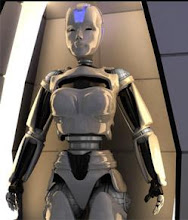
The hand maid Mary and the girls of Nazereth at Herod's place and the Dionysia festivals.
Party Games and dramatis tragedy ie the pretend crucifixion of Mary and the girls.
The Dionysia actually comprised two related festivals, the Rural Dionysia and the City Dionysia, which took place in different parts of the year. They were also an essential part of the Dionysian Mysteries.
This "rural Dionysia" was held during the winter in the month of Poseideon (roughly corresponding to December). The central event was the pompe - πομπή, the procession, in which phalloi (dildo penis) - φαλλοί were carried by phallophoroi - φαλλοφόροι. Also participating in the pompe were kanephoroi - κανηφόροι (young girls carrying baskets), obeliaphoroi - ὀβελιαφόροι (who carried long loaves of bread), skaphephoroi - σκαφηφόροι (who carried other offerings), hydriaphoroi - ὑδριαφόροι (who carried jars of water), and askophoroi - ἀσκοφόροι (who carried jars of wine). After the pompe, there were contests of dancing and singing, and choruses (led by a choregos) would perform dithyrambs. Some festivals may have included dramatic performances, possibly of the tragedies and comedies that had been produced at the City Dionysia the previous year. This was more common in the larger towns
The City Dionysia (Dionysia ta en Astei - Διονύσια τὰ ἐν Ἄστει, also known as the Great Dionysia, Dionysia ta Megala - Διονύσια τὰ Μεγάλα) was the urban part of the festival, possibly established during the tyranny of Pisistratus in the 6th century BC. This festival was held about three months after the rural Dionysia, during the month of Elaphebolion (corresponding to the end of March and the beginning of April), probably to celebrate the end of winter
...This was recalled each year by a procession of citizens carrying phalloi...
After these competitions, the bulls were sacrificed, and a feast was held for all the citizens
The next three days of the festival were devoted to the tragic plays. Three playwrights performed three tragedies and one satyr play each, one set of plays per day. Most of the extant Greek tragedies, including those of Aeschylus, Euripides, and Sophocles, were performed at the Theatre of Dionysus. The archons, epimeletai, and judges (agonothetai - ἀγωνοθἐται) watched from the front row.
Another procession and celebration was held on the final day, when the judges chose the winners of the tragedy and comedy performances. The winning playwrights won a wreath of ivy
During the pompe there was also an element of role-reversal - lower-class citizens could mock and jeer the upper classes
wiki link.
Luke 1 46-55
Mary says (from the Pompe):
Mary's Song(with elizabeth)
46And Mary said:"My soul glorifies the Lord
47and my spirit rejoices in God my Savior,
48for he has been mindful
of the humble state of his servant.
From now on all generations will call me blessed,
49for the Mighty One has done great things for me—
holy is his name.
50His mercy extends to those who fear him,
from generation to generation.
51He has performed mighty deeds with his arm;
he has scattered those who are proud in their inmost thoughts.
52He has brought down rulers from their thrones
but has lifted up the humble.
53He has filled the hungry with good things
but has sent the rich away empty.
54He has helped his servant Israel,
remembering to be merciful
55to Abraham and his descendants forever,
even as he said to our fathers."

No comments:
Post a Comment